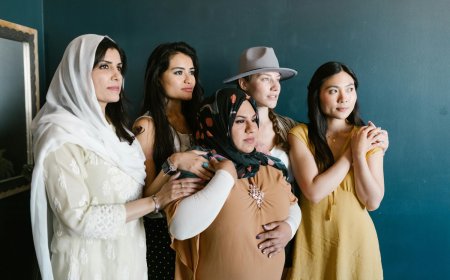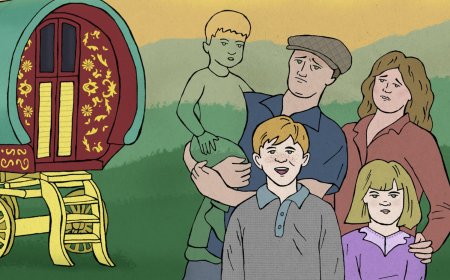Behind the Walls

As part of an extended #ResearchWeek at Maynooth University, this blog is the third of a series written by Geography student researchers that focus on ‘Spatial Justice and Publicly-Engaged Geographies’.
Discovery
In an exploratory walk taken in North Dublin in March 2024, I was intrigued by the crucifixes on the arches over the gates of houses 8, 9, and 10 on Henrietta Street, Dublin 1 (Figure 6). The religious iconography seemed misplaced on a street that screams ‘colonialism!’. A search found that Luke Gardiner, a banker, member of the Irish Parliament, and a property developer built the street in the eighteenth century. (Coleman & Andrews, 2009) (Figure 1).

A signboard on the railings outside the structure at Henrietta Street No. 9 tells us that the Daughters of Charity, in partnership with H.A.C.E (Henrietta Adult & Community Education Service) and Henrietta Street School, support disadvantaged communities in Dublin’s North Inner-City (Daughters of Charity, n.d.). The Company of the Daughters of Charity of St. Vincent de Paul (commonly called The Daughters of Charity or The Sisters of Charity), were originally founded in France in 1633 and arrived in Ireland in 1855. From what can be discerned in historical records, between 1892 and 1901, the Sisters of Charity of St. Vincent de Paul established the ‘Our Lady’s Home for Discharged Female Prisoners’ to provide ‘training’ for women discharged from jails in the late nineteenth century (An Chartlann Náisiúnta / National Archives, n.d.; Tithe an Oiraechtias / Houses of the Oiraechtias, 2010). In addition to offering domestic skills ‘training’, the Thom’s 1903 Irish Almanac and Official Directory of the United Kingdom and Ireland implied that women who had been ‘trained’ in the home were also ‘emigrated’ (Figure 2).

Today, apart from the crucifixes, there are neither physical reminders of the Our Lady’s Home nor information about the painful and forgotten stories of the Irish women who worked there, were forced to be trained, and/or forced to leave. This blog highlights the forgotten histories and landscapes of Our Lady’s Home in central Dublin as a first step in undoing these gendered (post)colonial geographies of injustice. Following an historic overview of the history of Henrietta Street in north Dublin, I move to a discussion of the grounds upon which Our Lady’s Home was built in the colonial and postcolonial eras.
On Holy Grounds
St. Mary’s Abbey was founded in 846 by King Máel Sechnaill, on an 800-990 statute acre site north of the Liffey River. The Benedictine monastery became affiliated with the Cistercian order in 1147 and was one of Ireland’s wealthiest monastic estates during the Middle Ages, as the abbey extended its lands across the country (Ó Conbhuí, 1961-63). The Dublin Abbey underwent multiple reconstructions during the political unrest of the 14th century. It was where Silken Thomas’s ill-fated rebellion in 1534 begun. Early in the 17th century, King James I gave the Abbey and its estate to Sir Garret Moore, Earl of Drogheda. The Moore family built their Dublin residence on North Earl Street (Stout, Loeber & O’Brien, 2016). Figure 3 shows a 1610 map of the area, indicating the grounds of the Dublin Abbey and location of Henrietta Street.

Power Houses
Geographers who study the iconography of buildings say argue that developers like to have their wealth and power embodied in the built environment (Hoelscher, 2009). A good example of this can be found in the eighteenth-century Georgian houses on Henrietta Street. Henry Moore sold St Mary’s Abbey estate to Luke Gardiner in 1729. Gardiner set down areas such Mountjoy, and Rutland (Parnell) Squares for palatial houses, and built smaller town houses in Gloucester (Sean McDermott), Gardiner, and Blessington Streets (Ward, Perkins and Geddis, 2002) (Figure 4).

The jewel in his crown was Henrietta Street, aka Primate’s Hill, which was the desired address for the movers and shakers of Church and State at the time. What is first Mountjoy House will later become the building in which Our Lady’s Home for Discharged Prisoner’s is established (Figure 5). It is interesting that Gardiner used the number 10 for his own house, as it mimics ‘Number 10’ Downing Street, which was originally offered by King George II in 1732 to the office of the First Lord of the Treasury and since 1905 the residence of the British Prime Minister. The number subtly confirms Gardiner’s desire to have his power, wealth and allegiances shown in the buildings he was developing.

Posers to Possers
Yet the posh and snobbish residential addresses on Henrietta Street in north Dublin were to be challenged by the wealthy and influential Fitzgeralds, Dukes of Leinster. The Fitzgeralds, having built the elaborate Leinster House south of the Liffey in 1725, encouraged the affluent elite and privileged citizens to set up their residences in the vicinity of their majestic house on Kildare Street on the south side of the city. This migration, together with the Act of Union later in 1800, added to the decline of the street, as members of the Irish Parliament, together with government officials, relocated to London. The demise of the extravagant Charles, Earl of Blessington, in 1829, saw the enforced sale of Blessington House in 1846.
The once palatial homes became tenements as agents and new owners took advantage of people who were suffering from the impact of merciless Poor Laws and the Great Famine. By 1901, the census recorded circa 960 people crammed into 16 houses. Included in that number were the circa 50 religious sisters and female inmates at No. 10, Our Lady’s Home for Discharged Female Prisoners. The inmates’ occupation was recorded as launderesses (An Chartlann Náisiúnta / National Archives, n.d.).
Bucking the Trend
The Daughters of Charity were invited to come to Ireland in the aftermath of the famine (McNeil, 1997). With the help of the Society for Discharged Female Prisoners, they opened Our Lady’s Home for Discharged Female Prisoners at 10 Henrietta Street at some point between 1892 and 1901. The Daughters/Sisters of Charity offered ‘skills’ to these women who wanted to return ‘unblemished to society’ at Our Lady’s Home. With some exceptions, the home prioritized taking in women from fee-paying families and first-time offenders of ‘good character’. More exclusive than the Magdalen Laundries run by other religious orders at the time, the Daughters/Sisters of Charity asserted that the quality of their ‘training’ ensured that the women in the home would have future employment prospects, without the stigma of incarceration. According to a 1941 memorandum submitted by Evelyn Carroll, a Probation Officer to the Department of Justice and active member of the Legion of Mary, the ‘training’ provided for residents at Our Lady’s Home was considered exceptional. Their ‘good results’, it appears, were sustained by rapid turnovers, tight entrance standards, an exit strategy for troublesome ‘inmates’, and a steady stream of requests for domestic servants from affluent, ‘respectable’ households at home and abroad (Carroll, 2014 [1941]). Caroll’s findings were similar to the summary provided in the McAleese Report (2013: 218), which noted a 1960 report by the Minster of Justice that mentioned the home’s ‘progressive’ qualities.
(Post)Colonial Ireland: Revolving doors
Following the establishment of the Irish Free State, there was a clear ambition to separate the Republic’s cultural identity from Britain. Similar to other nation-states, Ireland maintained notions of ‘respectability’, and divided classes into the poor and undeserving poor (Lucey, 2015). While the state claimed to be anti-British, it was unwilling to shed patriarchal ideologies in relation to incarcerating impoverished Irish girls and women in institutions run by the Catholic Church. The manly new State centred their cultural ideal on ‘Saints and Scholars’ and romanticised an ideal of ‘moral’ women. The stereotypical ‘Irish Colleen’, a name deriving from the Gaelic word ‘cailin’, meaning ‘girl’, ‘maiden’ or ‘daughter’ had to be virtuous, and following marriage, domestic and maternal. Without the financial or statutory support of family and State, many women were challenged by this idealised model that did not resonate with their reality and the realities of the diverse and strong roles women played in Irish history, including the rebellion. The girls and women who, for whatever reason, were seen to tarnish Ireland’s embryonic uniqueness were to be hidden from society.
Among the ways women were incarcerated in postcolonial Ireland were the Magdalen Laundries. These centres of incarceration were established during the colonial period by secular philanthropic agencies that had moralistic and religious agendas (Fischer, 2016; Black, 2024). The model was founded by Robert Dingle in London in 1758 to provide what was considered refuge for so-called ‘fallen’ women, and offer ‘training’ in ‘domestic skills’ and ‘moral decorum’ were claimed to give the women opportunities to live and work ‘safely’ (Ostberg, 2023). Lady Arabelle Denny started a similar facility in Ireland for young Protestant women in 1765 (Osberg, 2021). The homes spread across Ireland during the nineteenth century can be considered in light of a societal and political reaction to the so-called ‘moral’ descent of women who considered ‘broken’ by the spectre of poverty and starvation (Lucey, 2015).
The laundries, homes, and refuges run by religious and secular organisations during the British colonial era became sites of prolonged detainments and reincarcerations for some individuals. Following 1922, in Ireland consecutive state administrations continued to abdicate the care of women who had sought refuge or were detained for what should have been short periods of time to religious organisations run by nuns and volunteers with no professional training (Carroll, 2014 [1941]). The Religious Sisters of Charity, founded by Mary Aikenhead in 1815 to help people in need setting up schools and health care facilities, for example, became involved in the Magdalen system through their work with the poor.
Marking the Spot
Colonial and postcolonial patriarchal practices have affected societal structures globally, so much so that newly liberated states have found it hard to shake embedded forms of oppression (Young, 2011). At different moments in time, The Daughters and Sisters of Charity and related religious orders assumed the role of providing health, social and educational work for the girls and women in the Home and Laundry on Henrietta Street. Successive patriarchal Irish administrations are responsible for their lack of oversight of these institutions: they did not question the existence of these institutions, or how the girls and women were treated. While we may lay the blame at feet of state administrators, we also have to acknowledge that women who passed through the services of the Daughters and Sisters of Charity were wronged, based upon the stories of people who lived and worked in these institutions, as well as research shared by Justice for Magdalens.
Healthier and more equitable societies can be built by reflecting on grievous colonial and postcolonial histories (Negussie, 2004). Colonial buildings such as Henrietta Street No.10 are like the societies that constructed them – their facades tell of power and glory (Figure 6), yet it is within their walls that the transience of life and society is best seen. Recognising and honouring those historically wronged, rather than extoling the virtues of male administrative ‘heroes’, would provide a different and more inclusive perspective on a society. Creating a physical memorial at the former Our Lady’s Home would begin such a process by bringing its insides out so to speak, and in this way honour the women who worked there, the women who had supposedly ‘fallen from grace’. It would also be a place where the stories about the different women could be told, including not only those who had suffered but also those overcame their so-called ‘dishonour’ and built a better future for themselves, their children, and for whatever communities they were ‘sent’ to join.

— By Olive Dufficy
Olive Dufficy is third-year double-honours Geography and Anthropology student. This blog is a revised version of a research paper submitted to ‘GY249: Geographies of Justice’ taught by Professor Karen Till.
Acknowledgements: Maire, my sister, thank you for your insightfulness and humour as you listened to me twittering on about women’s dilemmas. Professor Karen Till, it was a privilege and pleasure to be one of your students. Thank you for your time, help, direction, support and patience during the process of the discovery. You made the work enjoyable and interesting – who knew what buildings could tell without saying anything.
References
Archiseek.com. (2010a). ‘1720 – Henrietta Street, Dublin’. 23 June. Available at: https://www.archiseek.com/2010/1720-henrietta-street-dublin/ [Data Base] (accessed 21 March 2024).
Archiseek.com. (2010b). ‘1730 – No.10 Henrietta Street, Dublin | Archiseek – Irish Architecture’. 23 June. [Data Base] Available at: https://www.archiseek.com/2010/1730-no-10-henrietta-street-dublin/ (accessed 21 March 2024).
Black, L. (2024) ‘Gendering postcolonial penality: The religious detention of women in Ireland’, Theoretical Criminology, p. 13624806241263440. Available at: https://doi.org/10.1177/13624806241263440.
Carroll. E.M. (2014 [1941]). ‘Memorandum Re: Women and Girls Who Come before the Central Criminal Court on Series Charges – And Other Relevant Matters’. Ed. Gerry McNally. Irish Probation Journal 11 (October), pp. 196-207. Available at: https://www.probation.ie/EN/PB/0/DC964EB17120FF228025802F00333526/$File/IPJ2014pages196to207.pdf (accessed 5 April 2024).
Coleman, J. and Andrews, H. (2009) ‘Gardiner, Luke’. Dictionary of Irish Biography [Online]. Available at: https://doi.org/10.3318/dib.003424.v1.
Daughters of Charity (n.d.) ‘Mission Statement – Daughters of Charity’ [Webpage]. Available at: https://www.daughtersofcharity.ie/about/mission-statement/ (accessed 29 August 2024).
Dwyer, O.J. and Alderman, D.H. (2008) ‘Memorial landscapes: analytic questions and metaphors’, GeoJournal, 73(3), pp. 165–178. Available at: https://www.jstor.org/stable/41148292 (accessed 5 April 2024).
Dunbar, H. (2017). ‘Discharged Prisoners’ Aid Societies, Health and Prison After Care in England and Ireland’, Exploring the history of prisoner health, 17 May. Prisoners, Medical Care and Entitlement to Health in England and Ireland, 1850-2000 Blog. Available at: https://histprisonhealth.com/policy-events/inside-reform/background/discharged-prisoners-aid-societies/ (accessed 4 September 2024).
Fischer, C. (2016) ‘Gender, Nation, and the Politics of Shame: Magdalen Laundries and the Institutionalization of Feminine Transgression in Modern Ireland’, Signs: Journal of Women in Culture and Society, 41(4), pp. 821–843. https://doi.org/10.1086/685117.
Government of Ireland. (2013). ‘Chapter 9: Routes of entry to the Magdalen Laundries (A): Criminal Justice system’. In The Report of the Inter-Departmental Committee to establish the facts of State involvement with the Magdalen Laundries: Part III – State involvement with the Magdalen Laundries. Chair: Senator Martin McAleese. Available at: https://www.gov.ie/pdf/?file=https://assets.gov.ie/45756/ac9786cce9044af3931f780c6b2bd988.pdf#page=null
Henderson, A.Q. (2014) ‘Maps of Dublin: Old Speed’s map reveals history of Dublin.’, [Blog] History, Art & Architecture in Dublin & abroad. Plus, Art & Architecture tours by Arran & Dublin Decoded. Available at: https://arranqhenderson.com/2014/10/06/maps-of-dublin-old-speeds-map-reveals-history-of-dublin/ (accessed: 29 April 2024).
Hoelscher, S. (2009) ‘Landscape Iconography.’ In Kitchin, R. and Thrift, N. Eds. International Encyclopaedia of Human Geography. Elsevier online, pp. 132–139.
Tithe an Oiraechtias/Houses of the Oiraechtias. (2010). ‘Question 457’ by Deputy Ruaraí Quinn to Deputy Dermot Ahern, Minster for Justice, Equality and Law Reform. In ‘Magdalene Laundries: Dáil Éireann Debates, Tuesday – 19 January 2010’. Available at: https://www.oireachtas.ie/en/debates/question/2010-01-19/490/ (last accessed 21 March 2024).
McNeil, B.A. (1997) Genealogical Development of the Vincentian Family, https://via.library.depaul.edu/vincentiana. Available at: https://via.library.depaul.edu/vincentiana.
Murtagh, T. (n.d.) ‘Henrietta Street: From Townhouse to Tenement – The Irish Story’. Available at The Irish Story Webpage: https://www.theirishstory.com/2023/06/13/henrietta-street-from-townhouse-to-tenement/ (accessed: 11 September 2024).
National Archives of Ireland (n.d.) ‘Poverty and Health’. Chapter in ‘Ireland in the early 20th century’. [Webpage]. Available at: https://www.census.nationalarchives.ie/exhibition/dublin/poverty_health.html (accessed: 21 March 2024).
Ó Conbhuí, C. (1961-63) ‘The Lands of St. Mary’s Abbey, Dublin’, Proceedings of the Royal Irish Academy. Section C: Archaeology, Celtic Studies, History, Linguistics, Literature, 62, pp. 21–86. Available at: https://www.jstor.org/stable/25505103 (accessed: 1 May 2024).
An Chartlann Náisiúnta / National Archives (n.d.) ‘1901 and 1911 Census’. Available at: https://www.nationalarchives.ie/genealogy/1901-1911-population/ (accessed: 1 May 2024).
Ostberg, R. (2023) Magdalene laundry | Ireland, Survivors, & Facts, https://www.britannica.com/topic/Magdalene-laundry. Available at: https://www.britannica.com/topic/Magdalene-laundry (accessed: 30 April 2024).
Prunty, J. (2014) ‘Our Lady’s, Henrietta Street, Dublin: Accommodation for Discharged Female Prisoners p. 181’, in The Daughters of Charity of St Vincent de Paul in Ireland: the early years. Blackrock, Co. Dublin: The Columba Press (Book, Whole). Available at: https://go.exlibris.link/syzj5B7X (Accessed: 5 May 2024).
‘Routes of entry to the Magdalen Laundries (A): Criminal Justice system’ (2013). Available at: https://www.gov.ie/en/collection/a69a14-report-of-the-inter-departmental-committee-to-establish-the-facts-of/.
Stout, G., Loeber, R. and O’Brien, K. (2016) ‘Mellifont Abbey, Co. Louth: a study of its post-dissolution architecture 1540–1727’, Proceedings of the Royal Irish Academy: Archaeology, Culture, History, Literature, 116C, pp. 191–226. Available at: https://doi.org/10.3318/priac.2016.116.6.
Thom’s Irish Almanac and Official Directory of the United Kingdom of Great Britain and Ireland. (1903). Available through Google Books at: https://books.google.ie/books?id=ei9D0TMco5oC (accessed April, 2024).
Ward Perkins, S. and Geddis, W. (eds) (2002) ‘Gardiner Papers’. Leabharlann Náisiúnta na hÉireann National Library of Ireland. Available at: https://www.nli.ie/sites/default/files/2022-12/067_gardiner.pdf.
Youngs, M. (2011 [1990]) ‘The Five Faces of Oppression’, in Justice and the Politics of Difference. Princeton, NJ: Princeton University Press.










































